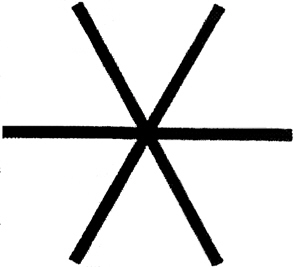Words in reg. 10(2) substituted (31.12.2020) by The Weighing and Measuring Equipment and Meters (Amendment of Secondary Legislation) (EU Exit) Regulations 2018 (S.I. 2018/1387), reg. 1(2), Sch. para. 14(3); 2020 c. 1, Sch. 5 para. 1(1)
An inspector shall not pass as fit for use for trade an automatic catchweighing instrument unless—
it complies with all the appropriate requirements of these Regulations; and
on testing, it falls within the prescribed limits of error in relation to passing as fit for use for trade.
An inspector shall not pass as fit for use for trade an automatic catchweighing instrument imported from
where the requisite documentation is presented in accordance with regulation 9, the test report recites and the test data confirm to the satisfaction of the inspector that, on testing in accordance with the provisions of clause 5.3 (initial verification) of Part 1 of OIML R51 or on an equivalent basis, that automatic catchweighing instrument fell within limits of error which afford in use an equivalent standard to the prescribed limits of error; and
it otherwise complies with all the relevant requirements of these Regulations.
For the purposes of these Regulations, the prescribed limits of error relating to an automatic catchweighing instrument shall be determined in accordance with the provisions of Schedule 5.
The stamp shall be placed on the verification mark support referred to in clause 3.9.2 of OIML R51 which is set out in Schedule 4.
An inspector shall not stamp an automatic catchweighing instrument in accordance with paragraph (1) if it bears any mark which, in his opinion, might reasonably be mistaken for the stamp, or any statement or mark (other than an inspector’s stamp) which purports to be or, in the opinion of the inspector, might reasonably be mistaken for an expression of approval or guarantee of accuracy by any body or person.
An inspector shall obliterate a stamp, in accordance with the requirements of these Regulations, by means of punches or pincers of suitable sizes of a six-pointed star design as shown in the following illustration—
Subject to paragraph (2), an inspector shall obliterate the stamp on any automatic catchweighing instrument which—
on testing in accordance with clause 5.3 of Part 1 of OIML R51 fails to fall within the prescribed limits of error for in-service testing; or
fails to comply with any other appropriate requirement of these Regulations.
Except as provided by regulation 14, where any automatic catchweighing instrument does not fully comply with the requirements of these Regulations, but the nature or degree of the non-compliance is not, in the inspector’s opinion, such as to require the immediate obliteration of the stamp, he shall give to the proprietor or any person in control of the automatic catchweighing instrument a notice calling on him to have the instrument corrected within a stated period not exceeding 28 days, and shall obliterate the stamp if the correction has not been made within the stated period.
An inspector shall obliterate the stamp on any automatic catchweighing instrument which has, since it was last stamped, had any alteration or addition made to it such that it could not be passed as fit for use for trade under regulation 10.
Subject to paragraph (3), an inspector shall obliterate the stamp on any automatic catchweighing instrument which has, since it was last stamped, been the subject of any of the following occurrences, that is to say, adjustment, alteration, addition, repair or replacement which could, in the opinion of the inspector, have affected its accuracy or function.
Where an automatic catchweighing instrument has been subjected to one or other of the occurrences in paragraph (2) and the chief inspector of weights and measures for the area in which the instrument is situated has been furnished in writing with details of the occurrence, an inspector may obliterate the stamp.
An inspector may obliterate the stamp on any automatic catchweighing instrument if—
it is in use for trade for a particular purpose and—
is used in such a way as not to meet the requirements of regulation 5; or
in the opinion of the inspector, is otherwise unsuitable for use for that purpose; or
it is in use for trade in circumstances where the instrument is subject to any extraordinary environmental or operating conditions which, in the opinion of the inspector—
prevent the instrument operating consistently and correctly; or
are likely prematurely to degrade the metrological characteristics of the instrument.
Subject to paragraph (2), for the purposes of these Regulations, the obliteration of any one stamp on any automatic catchweighing instrument shall be deemed to be the obliteration of all other stamps on that instrument.
As an exception for the purposes of section 11(2)(b) of the Act (express provision authorising the use for trade or possession for such use of equipment where the stamp remains undefaced), in the application of paragraph (1) to an automatic catchweighing instrument which is also capable of functioning as a non-automatic weighing instrument to which the Regulations specified in regulation 3(2) apply, the obliteration of any stamp shall not be taken to preclude the use for trade or possession for such use of the instrument in its measurement function as such a non-automatic weighing instrument, unless the instrument bears a disqualification sticker as provided for in regulation 23 or 24 of the Non-automatic Weighing Instruments Regulations 2000.
